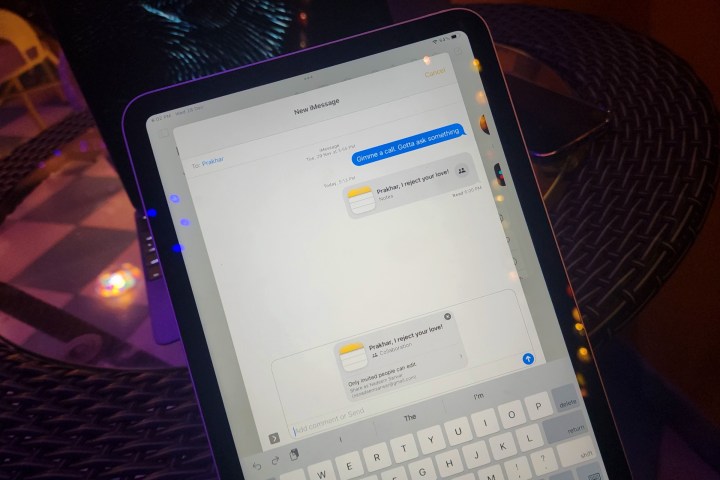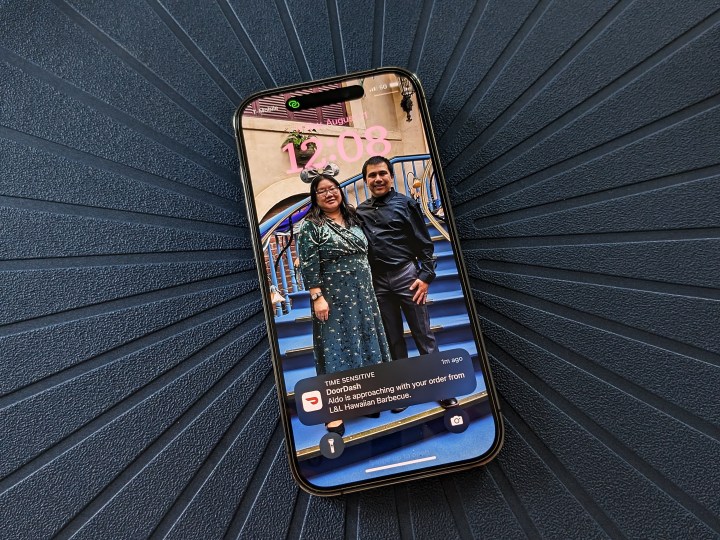
For more than a decade, I’ve been using Apple’s iPhone. I started with the original iPhone in 2008, which was a birthday gift and also my first Apple product, and have upgraded every year since.
However, since I started at Digital Trends, I’ve been checking out more Android phones. Though not all Android phones are winners, there have been a few that I’ve really enjoyed — including the Google Pixel 7, Samsung Galaxy S23, Google Pixel Fold, and Nothing Phone 2. I’ve experienced firsthand how Android handles some things a lot better than the iPhone, like customization and notifications, and the hardware designs can definitely be a lot more interesting.
Still, there are a few big reasons why I continue to use my iPhone 14 Pro as my primary smartphone.
iMessage really is that good

Since I started using the iPhone in 2008, I have pretty much expanded all of my personal and work devices to Apple gear. So I not only have just an iPhone 14 Pro right now, but I also have a 27-inch iMac, various MacBooks including Airs and Pros over the years, an 11-inch iPad Pro, and an Apple Watch Ultra. Though I typically don’t upgrade my computer, iPad, and Apple Watch every year like the iPhone, I still tend to get a new one every at least every few years.
Despite all of that, I would definitely consider my iPhone to be the backbone of everything else I use. I’ve had the same phone number since high school, and that’s what I use primarily for iMessage (along with some email addresses).
I use iMessage to keep in contact with my friends and family, and I know I’m not the only one. One of the reasons why I love using iMessage, though, is the simple fact that all of my messages — even texts with Android users — will show up on my iPad and Mac. No matter what device I’m using, I know I can easily access all of my messages and texts, even if my iPhone is in a room on the other side of the house.

Now, if you use an Android phone and a Mac, there are still ways to access your messages via third-party apps. But that’s the problem — you need to research and look for a good third-party app to do so. That’s why I like iMessage: it’s already installed on all of my Apple devices, and in the famous Apple words, “it just works.” My messages are synced as long as I am signed in to my Apple ID, and I can send and receive no matter the device. No extra work is needed.
Additionally, most of the people I message also use an iPhone. That means I can send photos and videos without them being compressed and pixelated messes. I like being able to edit and unsend messages if need be, see when people are in the process of responding, have message reactions work properly, and more. And being able to autofill security codes from texts has been one of the best things Apple has ever added. There are just so many great features for iMessage that I would miss out on if I made the complete switch over to Android, and while that lock-in may not be the most consumer-friendly thing, it’s an undeniably huge reason why I keep coming back to my iPhone.
AirDrop makes transferring photos a breeze

Another part of my job involves taking (a lot) of photos and getting them onto my computer. For this, I find nothing nearly as easy as AirDrop between my iPhone, iPad, and Mac.
Since I don’t have a standalone digital camera, I just use my smartphone for all of my photo and video recording needs. I mean, most flagship phones these days have pretty good cameras, so why not? I typically do some quick edits to make sure the photos look good enough for the web, and then it’s time to get them onto my computer to upload into WordPress.
On my iPhone 14 Pro, I just do everything in the Photos app, then select the images I need and AirDrop them over to my iMac. They end up in the Downloads folder, I rename them, and I’m ready to go.
With an Android phone, I do my edits, but then I don’t have a quick way to get them from my phone to the iMac. Instead, I have to go to Google Photos in my browser, find the images I need, and then download them to my computer. It involves extra steps, and I really wish I could eliminate the step of having to get on the computer to grab the photos. Android does have Nearby Share, but that doesn’t work with Macs — at least not without a third-party app.
Even though I tend to like how photos come out more on my Google Pixel phones, I still take them with my iPhone for the most part. The process of getting them on my computer is so much more streamlined with AirDrop, and for something I do so often, that’s a big deal.
It’s all about the ecosystem

As mentioned above, I’ve been using iPhones almost as early as humanly possible. Since the App Store launched in 2008, I’ve accumulated a ton of app and game downloads, especially since I spent the early days of my career reviewing software.
Though plenty of those apps probably don’t exist on the App Store anymore, I’m still plenty vested in the ecosystem as a whole. There are still Apple-only apps that I depend on daily, such as Ulysses as my main writing app, Fantastical for calendars, Overcast for podcasts, Pixelmator for photo editing, Ivory for Mastodon, and more. I have also put a lot of money into Disney Emoji Blitz as my go-to time waster, and I’d rather not risk losing all of my progress switching between devices for that.
When you’re primarily using all Apple gear, it all (mostly) just works — and it’s beautiful.
I’ve also switched over to some native Apple apps in recent years, like Notes. A lot of important notes are kept in my Notes app, and I’d rather not have to export all of that somewhere else. Oh, and let’s not forget the many years of health data I’ve accumulated since my first Apple Watch Series 0. I’m not exactly keen on starting over on a different platform and losing my 1000+ day Move streak.
I know it probably seems silly that even though I’ve complained plenty about the iPhone, I still use it. I tend to see my previous complaints more as constructive criticism because no company or product is perfect, and Apple certainly isn’t an exception. But when you’re primarily using all Apple gear, it all (mostly) just works — and it’s beautiful.
Editors' Recommendations
- I can’t wait for Nothing to launch this stunning phone
- Nomad’s new iPhone case and Apple Watch band may be its coolest yet
- 5 phones you should buy instead of the iPhone 15
- Why you should buy the iPhone 15 Pro instead of the iPhone 15 Pro Max
- iPhone SE 4: news, rumored price, release date, and more




